Air pollution is causing pollinating insects like bees and butterflies to lose their ability to smell flower nectar. This not only affects these insects and plants specifically.
Since many of our food sources depend on the pollination process by insects, scientists predict that the yield of certain crops may decline in the future due to air pollution.
This will even impact food security as the world becomes increasingly populated. Many food types, such as cabbage, apples, cherries, and cocoa, will see reduced yields, or we may have to resort to large-scale artificial pollination.
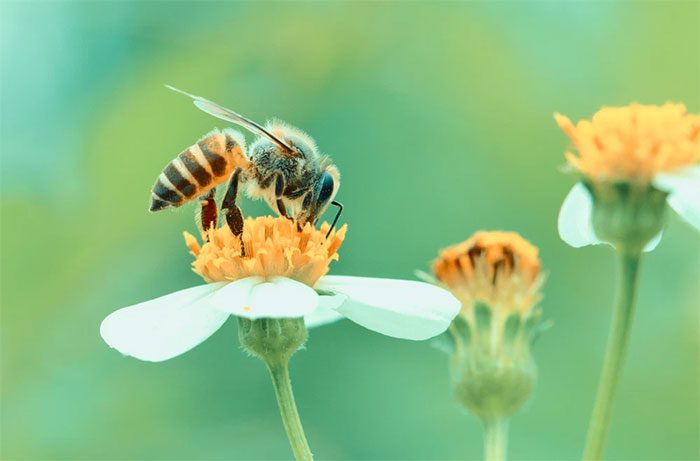
Insects are losing their sense of smell due to air pollution.
The Insect Pollination Ambush
The mustard flower fields at the University of Reading’s Sonning farm in the UK have recently seen the sudden appearance of gigantic circles arranged in an octagonal shape. But this is not an art installation competition or evidence of alien activity. In fact, scientists are installing a huge fumigation system there.
Fumigation involves spraying chemicals into the air to kill insects, similar to how you would use an industrial sprayer to apply mosquito repellent. However, here, scientists do not want to kill any insects; they are merely simulating an air pollution environment with common pollutants.
The fumigation nozzles at the eight corners of this octagonal shape will emit ozone and diesel exhaust. The goal is to test whether these common pollutants affect insects and how they pollinate mustard flowers.
To obtain accurate data, scientists at the University of Reading had to conduct two ambushes. They were trained to stand as still as possible, like a scarecrow in the mustard field, keeping their eyes wide open just to count the number of insects entering the octagonal area.
- The first ambush was when the fumigation device was not turned on.
- The second ambush took place to compare when the machine emitted diesel exhaust and ozone.
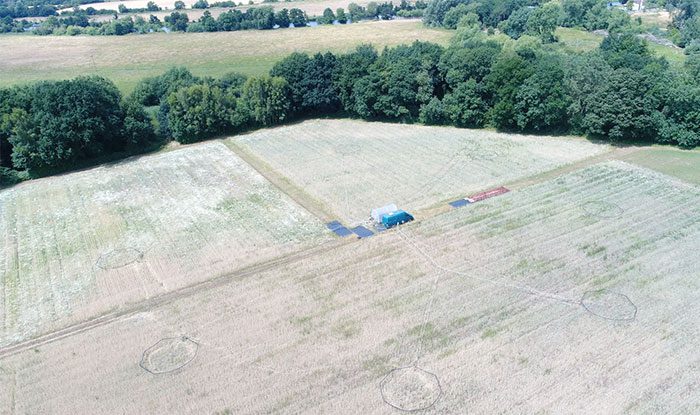
Gigantic circles arranged in an octagonal shape.
The results showed that compared to the first ambush, scientists in the second ambush counted a significantly lower number of insects coming to pollinate. When the fumigation machine emitted diesel, the number of insects flying to and landing on at least one flower decreased by 69%.
The figures were 62% for ozone and 70% for the combination of both pollutants.
When counting individual insect species, including bees, moths, butterflies, and flies – and considering the number of flowers each insect landed on, scientists found that their visitation rates dropped by 89% when the fumigation machine released diesel, 83% for ozone, and 90% for both pollutants.
James Ryalls, the lead author of the study, stated: “Our results indicate that air pollution is a potential factor adding pressure on pollinator species” – alongside a long list that includes diseases, habitat loss, and pesticides.
Air Pollution Makes Insects Lose Their Sense of Smell
Researchers believe that the reason insects are less effective at pollinating mustard flowers is that pollutants interfere with the flowers’ scent. Some commentators suggest that it could be due to the fumigation machines or the chemical odors scaring the bees and butterflies away. However, Ryalls accounted for that possibility and found that when they placed pan traps (a type of insect trap) within the octagonal area, they did not see a decrease in the number of insects in the traps.
This means that insects are not afraid of the fumigation machines or the chemical odors; they still tend to fly inside, but the number landing on flowers decreases because they are confused and cannot smell where the nectar is located.
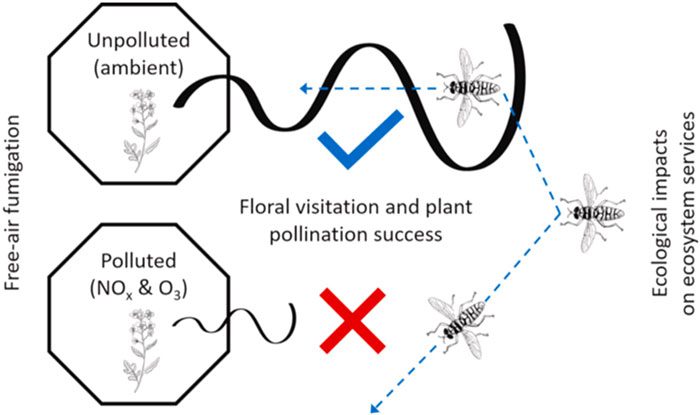
The sense of smell of pollinating insects is highly sensitive.
Insects, including bees and butterflies, smell using their antennae. These antennae are covered with olfactory receptors that help detect fragrant compounds.
The sense of smell of pollinating insects is far more sensitive than that of humans. When a flower emits a bouquet of fragrant chemical compounds, insects use it as a map to locate and find where they can suck nectar.
If one or more fragrant compounds are altered due to reactions with diesel or ozone, then the ratio and concentration of compounds in the fragrance bouquet will change. This distorts the insects’ navigational map, preventing them from locating the flowers.
While there are “good ozone” molecules in our atmosphere that shield the planet from ultraviolet rays from space, down on the ground, we have “bad ozone” generated from car exhaust, power plants, and oil refineries.
Ground-level ozone can have severe health effects, such as cardiovascular and respiratory issues. Now, it has also been found to disrupt the pollination process of insects.
A 2020 report from the U.S. Environmental Protection Agency cited an experiment showing that with higher levels of ozone present, the scent orientation ability of wasps was impaired.
The study concluded: “A range of evidence supports a “potential causal relationship” between exposure to ozone and altered signaling between insects and plants.
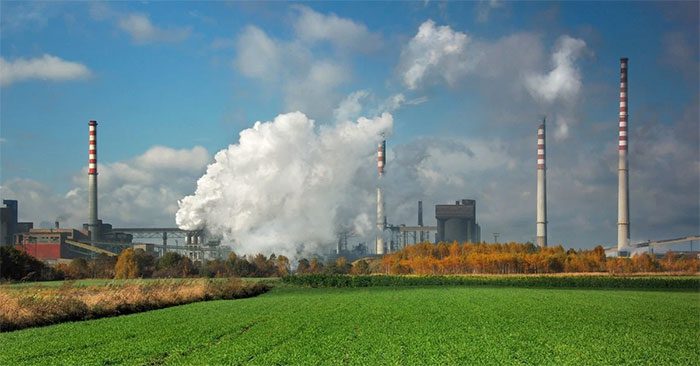
Safe levels of nitrogen dioxide (NO2) are below 53 ppb. (Illustrative image).
Currently, safe ozone levels in the air are set below 70 ppb (parts per billion). Safe levels of nitrogen dioxide (NO2) are below 53 ppb. In Ryalls’ experimental rounds, the ozone concentration he used was approximately 35 ppb, and the nitrogen dioxide concentration, a component of diesel exhaust, was around 21 ppb.
According to Ryalls, these figures are equivalent to half the concentration of ozone and diesel exhaust found next to a busy road in London. Thus, “even moderate levels of common air pollutants can reduce the rate of free-living insects found and pollinating flowers,” he stated.
What Are the Consequences?
This is not only bad news for pollinators, as these insects may struggle to find food in the context of air pollution, but it is also bad news for the plants that depend on insects for reproduction.
The outlook is also quite grim for humans: If insects cannot pollinate crops, we may lose essential products in our daily food supply chain.
While some crops are pollinated by wind, others rely entirely on insects. Ryalls states: “If we lost all pollinating insects tomorrow, we would not be able to produce cocoa beans, Brazil nuts, and certain fruits, which require pollination for reproduction.”
This also means that humans would no longer have apples, blueberries, melons, and vegetables like cabbage. Crops like blueberries, cherries, and almonds would also vanish as they rely almost entirely on honeybees for pollination.
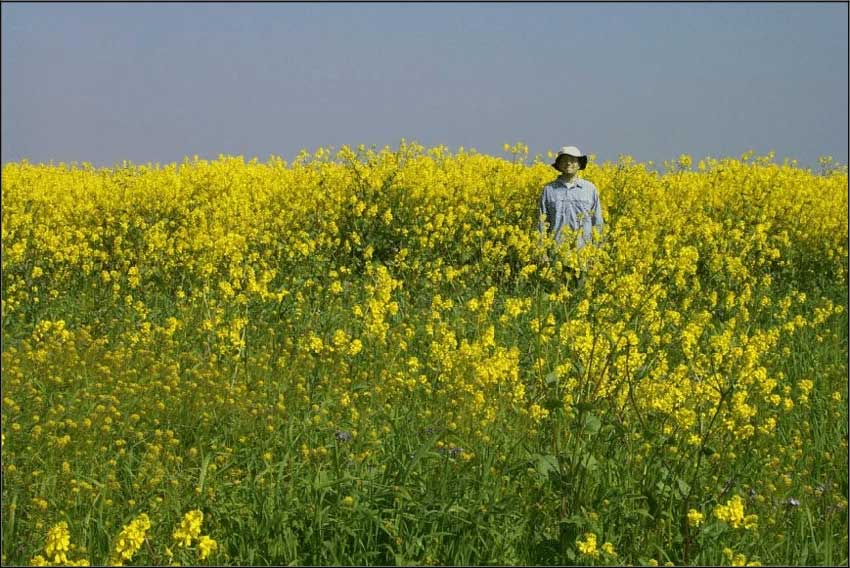
A scientist ambushing in the mustard field.
However, Ryalls indicated that the consequences do not stop there. The sense of smell of insects affected by polluted air also prevents them from detecting their own pheromones.
Pheromones are compounds produced by insects to attract mates of the same species. “If communication via pheromones is disrupted in a similar manner, it could lead to insects struggling to find mates. This could impact biodiversity within insect species,” Ryalls predicted.
Jaret Daniels, an associate professor of insect conservation at the Florida Museum of Natural History, stated: “No matter what type of pollution – whether it’s light, noise, or chemical – in one way or another, it affects pollinator species.
And this will have a significant impact on natural ecosystems as well as human agricultural activities. The increase in emissions related to fossil fuels not only affects the planet’s climate but also threatens the food security of ourselves and our descendants.
Research like this is thus “especially important as the global population continues to rise, particularly in developing urban environments where pollution is particularly severe,” Daniels noted.


















































